As we journey through life, we accumulate things. It’s completely normal. We start out with very little, and as we grow our careers, families, hobbies, passions, our belongings multiply.
By the time we reach retirement, we’ve collected so much that our closets, garages, and storage spaces are bursting at the seams. Every drawer is full. Every shelf stacked. And don’t even mention the basement!
People also give us stuff. Birthdays, anniversaries, holidays; we receive more than we need. And let’s be honest: sometimes we buy more stuff just to store our existing stuff better.
A Booming Industry of Overflow
The rise in personal storage units says a lot. What used to be just a business service is now part of everyday suburban life. Storage companies are popping up everywhere, offering to take in our overflow. Out of sight, out of mind.
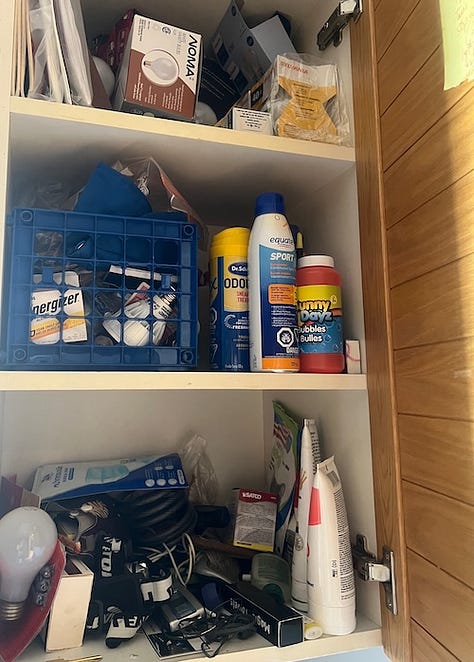

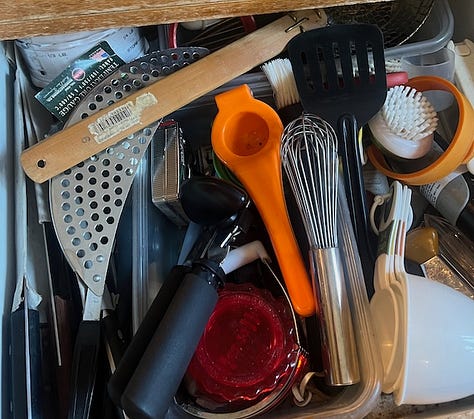
But is it really out of mind? Or are we just delaying the inevitable?
For many of us approaching or living in retirement, we suddenly face a hard truth: we don’t need most of it. And we certainly don’t want to leave it all behind for someone else to deal with.
So why do we keep it?
The Real Reasons We Hold On
Most of us don’t realize just how emotional our “stuff” is. Here are some of the most common reasons we keep things we haven’t used in years:
“It might come in handy.” But when that day finally comes, the item is either broken, outdated, or we’ve forgotten we had it.
“It’s cheaper to keep it than buy again.” That might have been true once. But with today’s mass production and low-cost stores, most things are easy and inexpensive to replace.
“It reminds me of someone.” Yes, but the memory is within us. That ceramic cat from Aunt Edna won’t bring her back, and the broken tail doesn’t help.
“It’s part of my history.” School projects, old report cards, yearbooks. Instead of hoarding it all in a dusty box, why not scan it and make a digital album?
“It feels disrespectful to toss it.” We often assign meaning or emotion to things that are simply objects. Letting them go doesn’t dishonor anyone.
“It connects me to someone I lost.” True connection is internal. If an item helps you grieve or remember, consider photographing it. Then let it go.
“I’ll sort through it later.” Especially common when moving away. We stash it in storage, intending to deal with it next visit. But more often than not, we never do, and the storage fees pile up year after year.

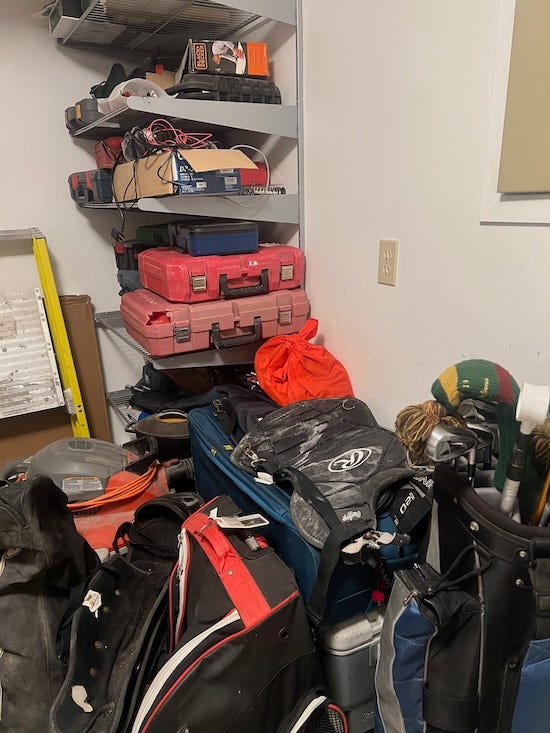
So much junk in our closets and basements
Most of It Sits in Boxes
If you’re honest, how much of the stuff in your attic, basement, or spare room have you used, or even looked at, in the last five years?
Ten?
Some people keep things so long, they forget what they own. I’ve seen people rent storage lockers they never open. They can’t even recall what’s inside.
And still… they pay to keep it.
It’s time we took a closer look at the stuff we’re clinging to, and what it’s costing us, financially, emotionally, and physically.
The Joy of a Home Diet
Just like our bodies feel better after shedding a few pounds, our homes feel lighter when we declutter. Here are six fantastic benefits of going on a “home diet” and downsizing your stuff, especially if you’re over 60:
1. You Feel Lighter
It’s a real feeling. Clearing out clutter lifts a physical and emotional weight. You can move freely again—without dodging boxes or risking a closet avalanche. You find corners you haven’t seen in years. You rediscover floor space and windowsills. It’s freeing.
2. Your Mood Improves
Clutter can create low-level stress you don’t even notice until it’s gone. Once your space is clear, your mind feels clearer too. You feel more at ease in your own home. You can relax. Sit with a cup of tea and not see ten things calling out to be sorted.
3. You Let Go of Guilt
We all have that item: “I can’t toss this, it was my father’s.” But we don’t use it. We don’t display it. We keep it out of guilt. And guilt doesn’t serve us. It weighs us down. Letting go—respectfully, intentionally—can be a powerful act of self-kindness.
4. You Free Up Your Memories
Objects don’t carry your memories—you do. That photo album might fade, but the feeling of that family vacation lives inside you. If an item helps, take a photo of it before letting go. You’ll be surprised how often just the picture is enough to spark the memory.
5. You Save Money
Keeping unused items costs real money. You need bigger homes, extra rooms, and/or rented storage units. Downsizing your stuff could mean downsizing your expenses. That’s money you could use for travel, hobbies, or spoiling the grandkids.
6. You Create a Legacy
When we declutter, we’re also doing a kindness to those who’ll come after us. We’re making it easier for family to navigate our belongings when the time comes. Instead of boxes of confusion, we leave a curated, meaningful selection of what truly matters.
Tips for Letting Go
Downsizing can be emotional. Start small. One drawer. One box. One shelf. As you build momentum, it gets easier.
Here are a few strategies that can help:
Create three piles: Keep, Donate, Toss.
Set a timer: Give yourself 30 minutes and stick to it. No need to do it all at once.
Take photos of sentimental items before letting them go.
Use the “one-year” rule: If you haven’t used it in the past year, it’s probably not essential.
Ask yourself: Would I buy this again today?
And remember, letting go of the item doesn’t mean letting go of the love, the person, or the memory.
Downsizing is a Gift
It’s a gift to yourself: more space, more peace, more clarity.
It’s a gift to your family: less burden, less stress.
And it’s a gift to others: when you donate things you no longer use, you’re giving them a new life.
You’re also giving yourself the space to enjoy your present, not just preserve your past.
What’s Next
In my next newsletter, coming July 26, I’ll explore age bias. I’ll look at what it is, how to spot it, and how we can face it with confidence, humility, and a sense of humor.
Until then, consider choosing one shelf, one closet, or even just one item to part with.
Because good things really do happen when you toss the junk.
Meet Fiona Parsons: Living Simply and Purposefully on Koh Phayam
Australian expat Fiona Parsons has called Thailand home since 2006. Her story is one of purpose, compassion, and quiet contentment. I caught up with Fiona to learn more about her journey; from running juice bars in Byron Bay to preserving the traditions of one of Thailand’s sea nomad communities.
Age: 62
From: Byron Bay, Australia
Retired from: Owning a chain of juice bars
Living in: Koh Phayam, Thailand
From Juice Bars to Volunteering
It’s no surprise that Fiona once ran a string of successful juice bars in Byron Bay, Australia. With her plant-based lifestyle, daily ocean swims, and love of sunshine, she was the embodiment of healthy coastal living.
But her life changed dramatically in 2005, following the devastating Indian Ocean tsunami. Fiona flew to Thailand intending to stay for just a few months to help the local communities recover. That visit planted a seed.
She returned to Australia, sold her business, and by August 2006, she was back. This time volunteering full-time at Yaowawit School in Phang Nga Province; a boarding school for children who had lost their families in the Tsunami. The school was home to over 140 orphans.
Fiona spent six months teaching English to the children and helping the school fund raise for much needed equipment. The experience deeply affected her.
A Shift Toward Simplicity
After her time at Yaowawit, Fiona traveled through Laos and Cambodia before returning to Thailand, this time for good.
She settled in Koh Phayam, a picturesque island on the west coast. There she became involved in dog sterilization efforts and teaching English in rural communities. Animal welfare and education had always been important to her, and here, she could make a difference in both.
Koh Phayam, her new home, is a quiet island near the Myanmar border. It’s known for its white sand beaches, cashew trees, and laid-back pace. The island didn’t even have electricity until 2019, but Fiona had already been living there for over a decade by then.

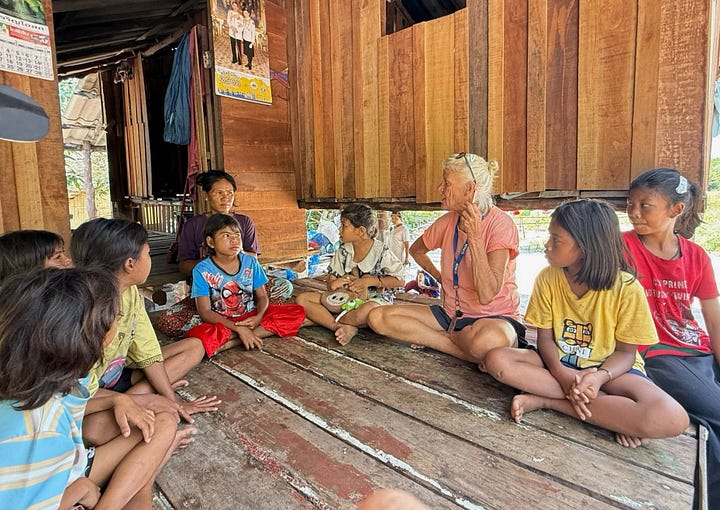
Preserving the Moken Culture
Koh Phayam is home to the Moken people, a traditional seafaring community often referred to as "sea gypsies." Once reliant on fishing, many Moken have found their livelihoods disappearing due to overfishing, environmental change, and development pressures.
Fiona noticed that many Moken elders spoke only their native dialect and not Thai or English. Their stories, songs, and wisdom risked being lost forever.
Determined to help, she began interviewing the elders and documenting their way of life. She wrote down their oral histories, traditions, and cultural practices, preserving them for future generations. It’s a labor of love and one that reflects her deep respect for the community she now calls home.
Life on Koh Phayam
Fiona lives simply in a modest home surrounded by jungle and sea. She shares her space with her two rescue dogs, and the Moken children who often stay with her. Internet service connects her with friends and family scattered across the globe, many of whom come to visit and experience a slice of island life.
Before moving to Thailand, Fiona had traveled extensively across Asia. That wanderlust has settled into a deep appreciation for stillness. She no longer feels the urge to roam. "I’ve found my place," she says.
Health-wise, Fiona has had her share of issues, but she feels confident in Thailand’s healthcare system. She has reliable insurance and access to excellent medical care when needed. Her financial security, supported by investments in Australia, allows her to focus on what matters most: living in the moment.
A Life of Choice
Fiona doesn’t dwell on politics or global events. Being remote doesn’t faze her as the mainland is just a short boat ride away. She prefers a life free from unnecessary drama.
“I choose to be happy,” she says. “Misery is a choice, and not one I’m going to make.”
At 22, Fiona might have never imagined settling down on a remote Thai island. But now, four decades later, she wouldn’t have it any other way. She has no plans to leave Koh Phayam and hopes to remain there for as long as she can.
Final Thoughts
Fiona’s story is a reminder that happiness often comes from embracing simplicity, service, and purpose. Whether she’s rescuing stray animals, documenting the voices of a disappearing culture, or just enjoying the sunset with her dogs, Fiona has built a life that reflects her values.
And she’s not just content—she’s thriving.
Please share my Newsletter with your friends and family, especially those who are approaching, or already retired. We can live our best lives in retirement.


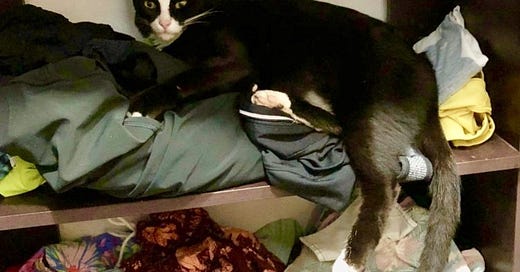



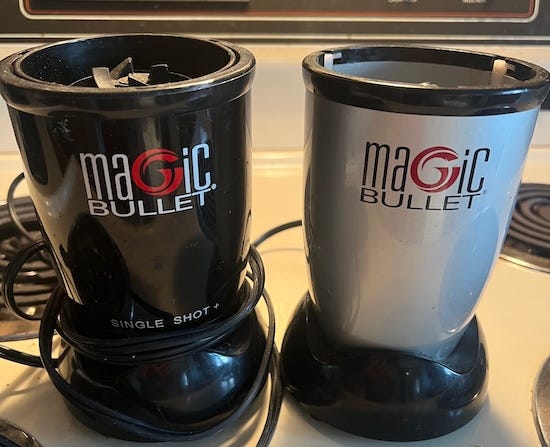



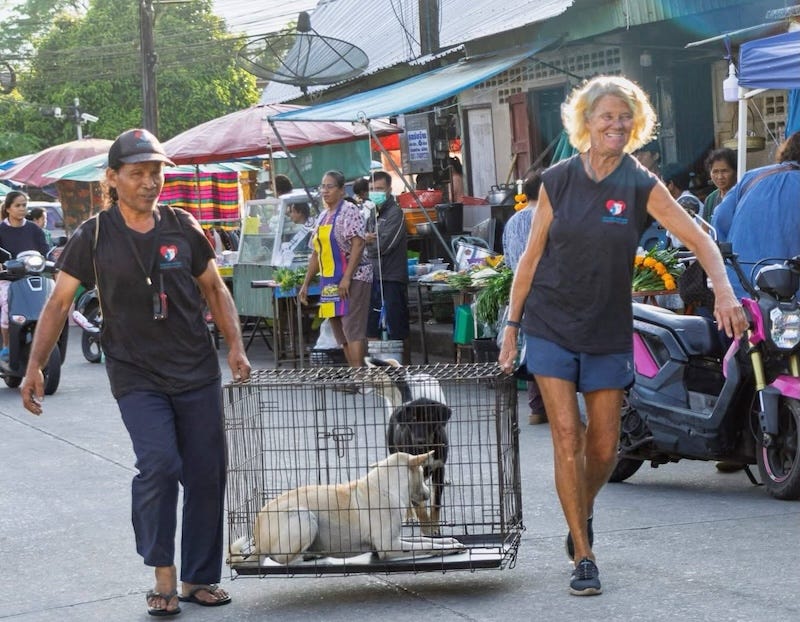

Perley-Ann, thank you for another relevant post. I have a lot of decluttering to do but the guilt is stopping me from doing a part of it. Things, my deceased parents and deceased friends gave me are the hardest things to part with but your article is very encouraging. I will refer to it often to give myself a boost. Also, health issues have prevented me from doing so. I should have done it when I was healthy but no use beating myself over it because who knew?